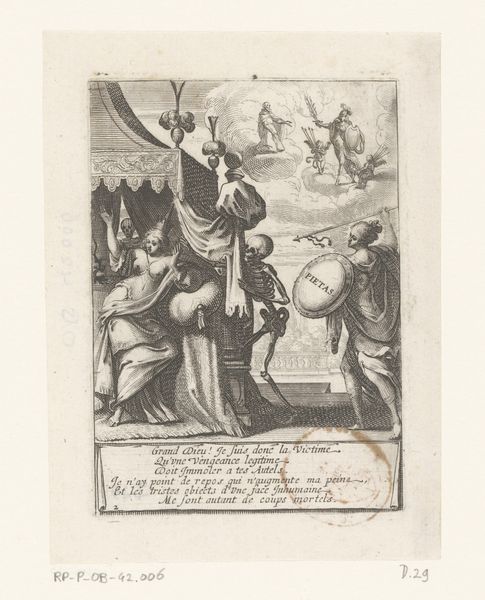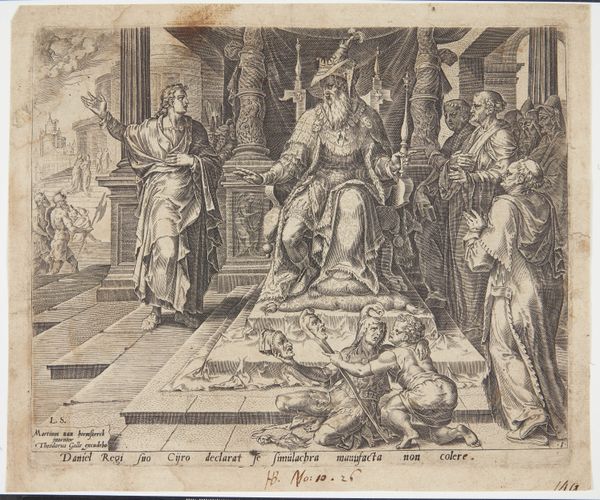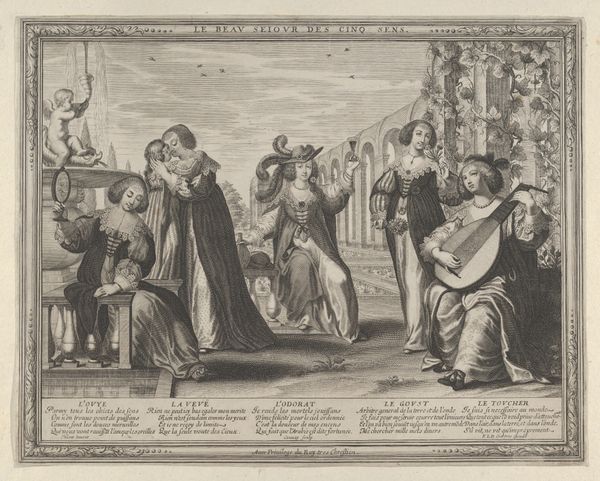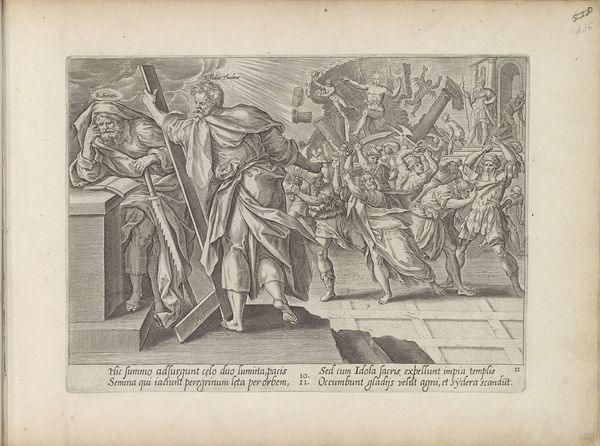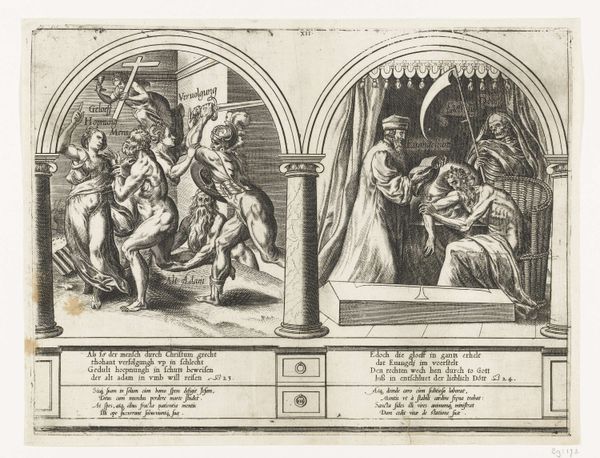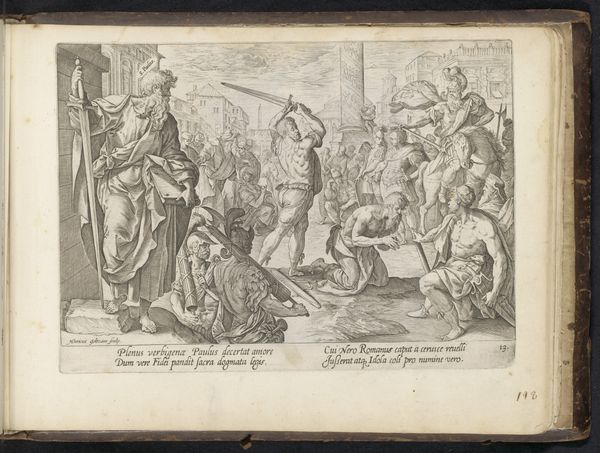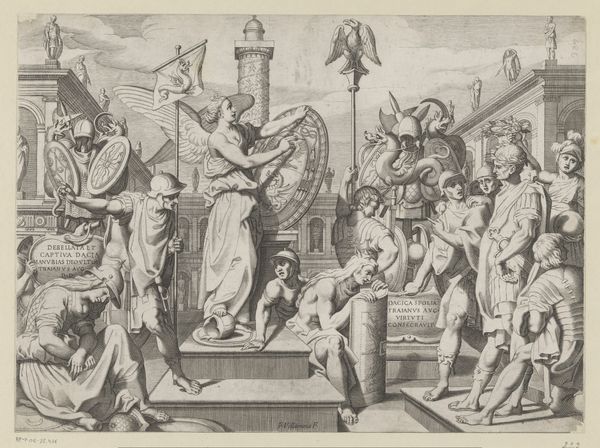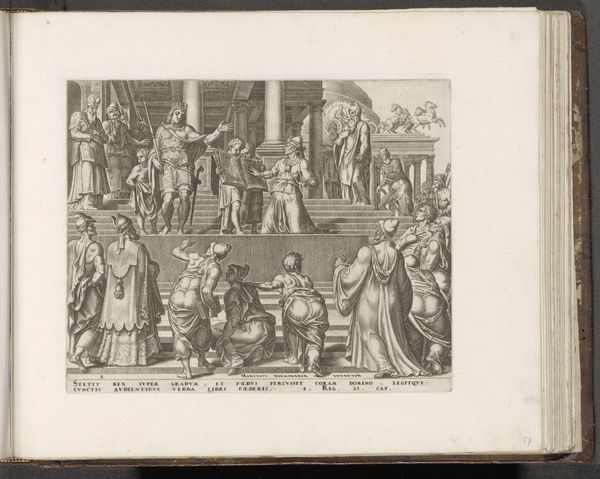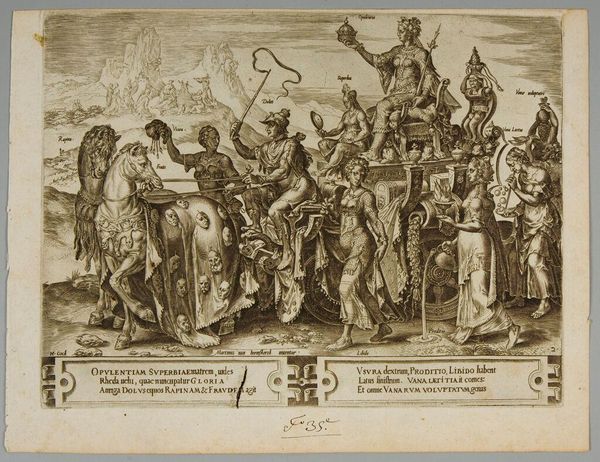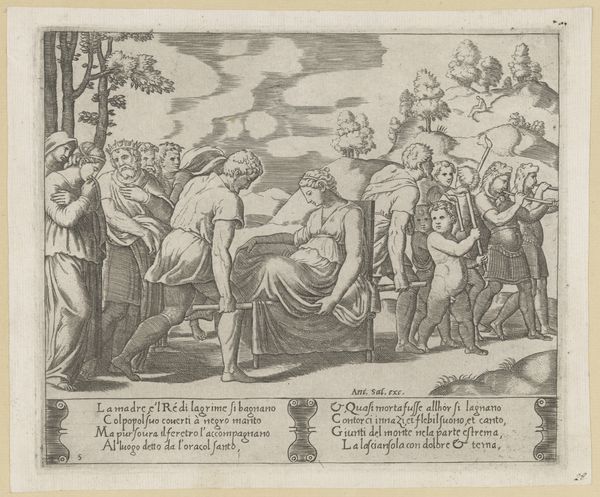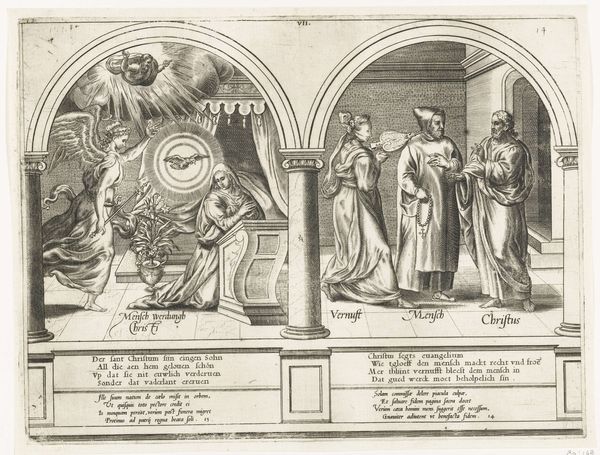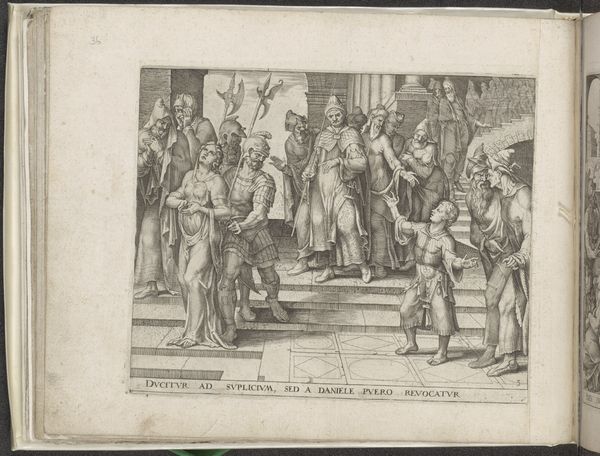
drawing, print, engraving
#
drawing
#
narrative-art
# print
#
figuration
#
genre-painting
#
history-painting
#
northern-renaissance
#
engraving
Dimensions: plate: 12 3/4 x 16 in. (32.4 x 40.7 cm) sheet: 16 1/4 x 20 1/16 in. (41.2 x 51 cm)
Copyright: Public Domain
Curator: Before us is Pieter Balten’s engraving, "The Dance of the World," which the Met dates sometime between 1530 and 1570. Editor: Chaotic! It’s a frenetic scene, full of disproportionate figures contorted in rather bizarre poses. What exactly is going on? Curator: The composition presents a fascinating, albeit visually overwhelming, arrangement. Observe how Balten uses varying line weights to differentiate textures, adding depth. The central female figure provides a vertical anchor, though I'm puzzled by her gaze… Editor: Ah, yes. We see this worldly chaos under the somewhat indifferent watch of that central allegorical figure, "Pleasure." This work reveals a fascinating commentary on social disruption during the Northern Renaissance, doesn't it? Courtly enjoyment intertwined with foolishness, even physical comedy, but all rooted in the historical backdrop of a rapidly changing world. Curator: You perceive social commentary, I see compositional imbalance cleverly disguised with ornamental excess. The figures appear trapped within the picture plane, their movements arrested. Editor: But aren’t those gestures important to our reading of this print? I’m not sure imprisoned is the right word, given their frantic, almost carnivalesque gestures. Each pose seems intentionally designed to provoke a reaction in the viewer. Curator: Perhaps. Consider how the use of space forces the viewer's eye to dart across the engraving. No single area dominates. The foreground elements feel equally important as those receding toward what we could hardly call a background. Editor: That spatial organization draws attention to each small vignette playing out in this world’s dance, heightening our awareness of their interconnected roles. And let’s not forget the symbolic resonance inherent in popular imagery; engravings such as these offered visual accessibility that reached broader audiences than painted panels, contributing to shared cultural literacy. Curator: I acknowledge that engravings like "The Dance of the World" present multiple levels of interpretation. But, I find myself most captivated by the technical proficiency required to achieve such density using solely line and tone. Editor: Indeed, there is immense artistry on display, yet that formal mastery serves, for me, a much larger historical conversation about value and virtue. Curator: An observation well made! Thank you, as always, for providing this valuable perspective.
Comments
No comments
Be the first to comment and join the conversation on the ultimate creative platform.
